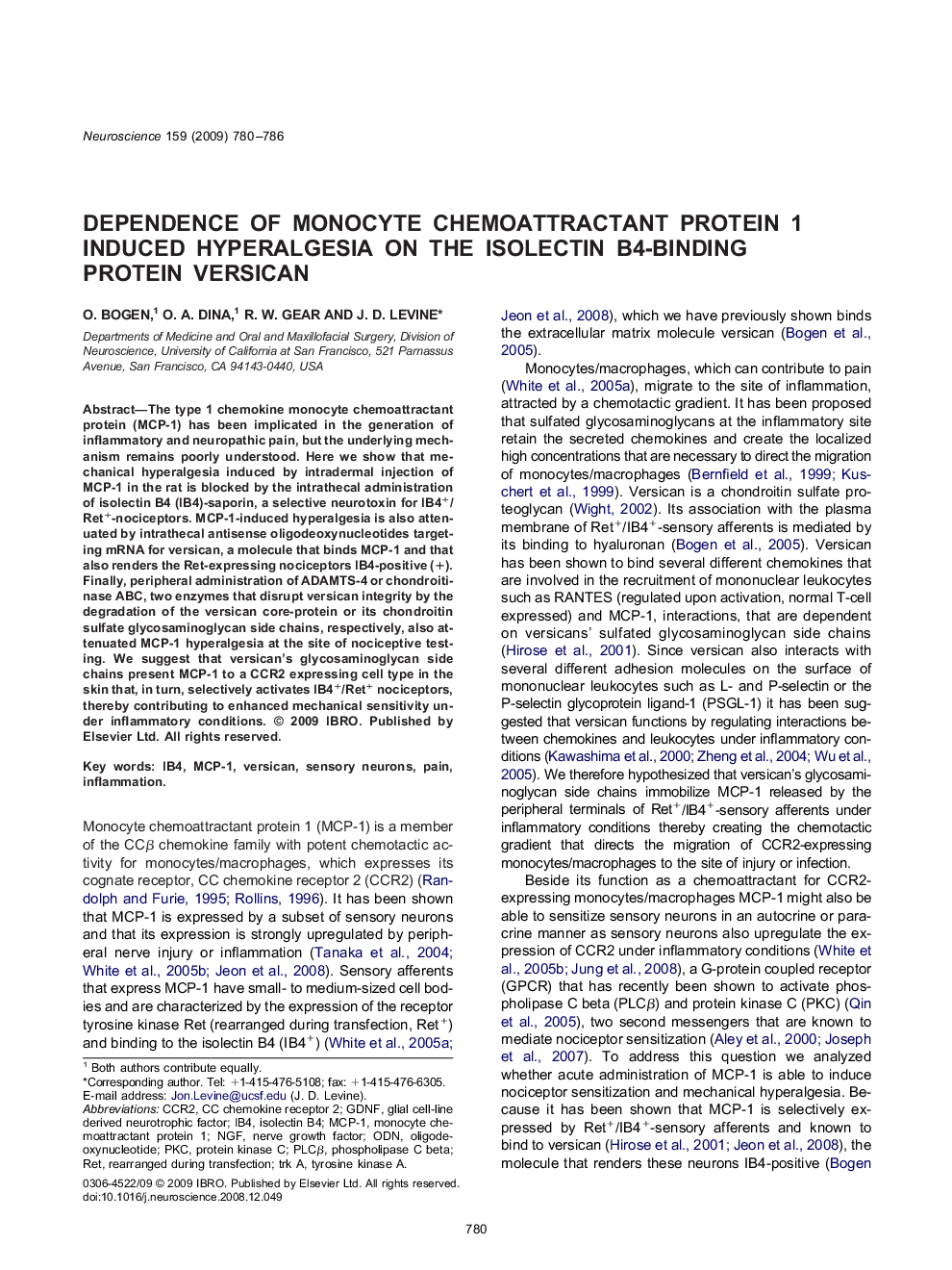| Article ID | Journal | Published Year | Pages | File Type |
|---|---|---|---|---|
| 4340813 | Neuroscience | 2009 | 7 Pages |
The type 1 chemokine monocyte chemoattractant protein (MCP-1) has been implicated in the generation of inflammatory and neuropathic pain, but the underlying mechanism remains poorly understood. Here we show that mechanical hyperalgesia induced by intradermal injection of MCP-1 in the rat is blocked by the intrathecal administration of isolectin B4 (IB4)-saporin, a selective neurotoxin for IB4+/Ret+-nociceptors. MCP-1-induced hyperalgesia is also attenuated by intrathecal antisense oligodeoxynucleotides targeting mRNA for versican, a molecule that binds MCP-1 and that also renders the Ret-expressing nociceptors IB4-positive (+). Finally, peripheral administration of ADAMTS-4 or chondroitinase ABC, two enzymes that disrupt versican integrity by the degradation of the versican core-protein or its chondroitin sulfate glycosaminoglycan side chains, respectively, also attenuated MCP-1 hyperalgesia at the site of nociceptive testing. We suggest that versican's glycosaminoglycan side chains present MCP-1 to a CCR2 expressing cell type in the skin that, in turn, selectively activates IB4+/Ret+ nociceptors, thereby contributing to enhanced mechanical sensitivity under inflammatory conditions.
